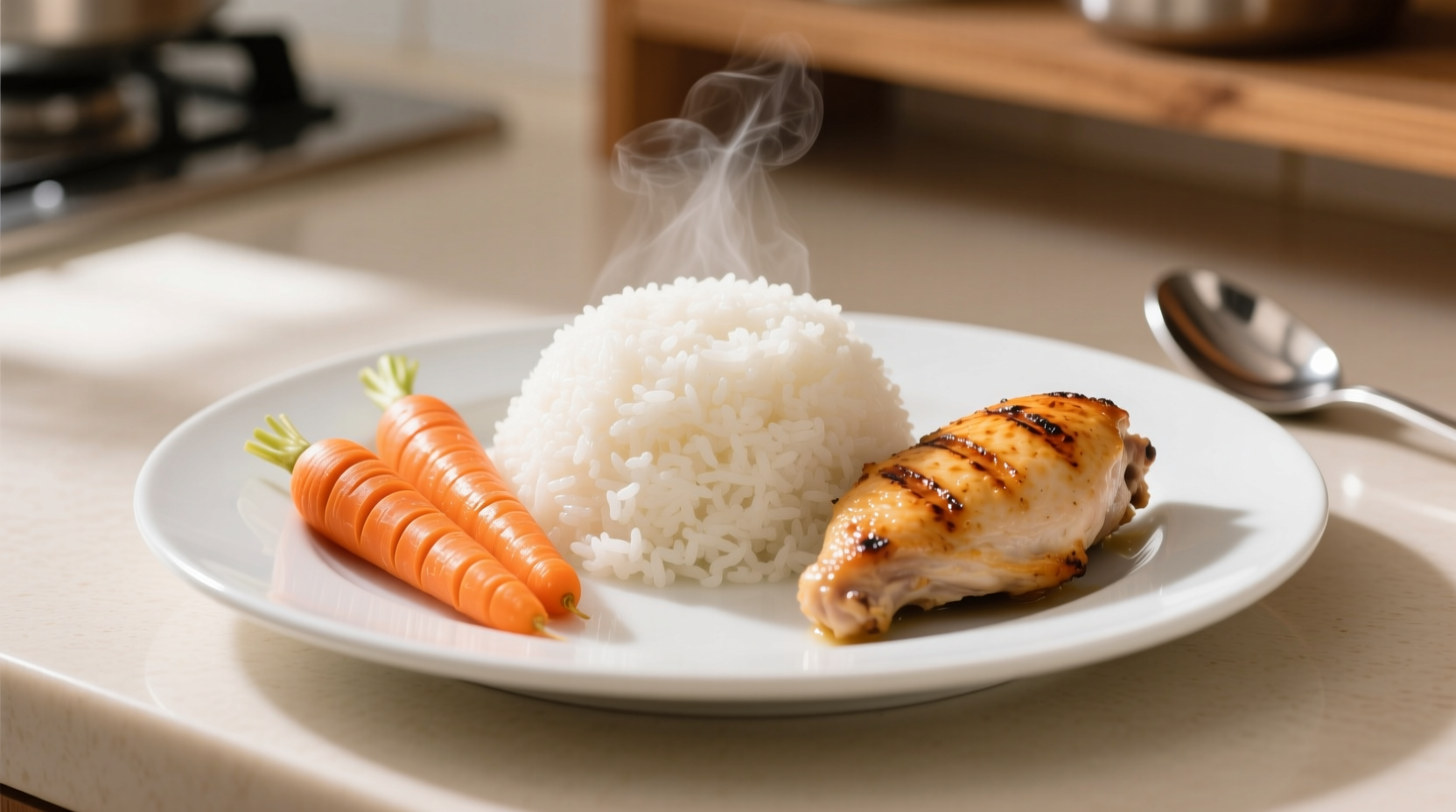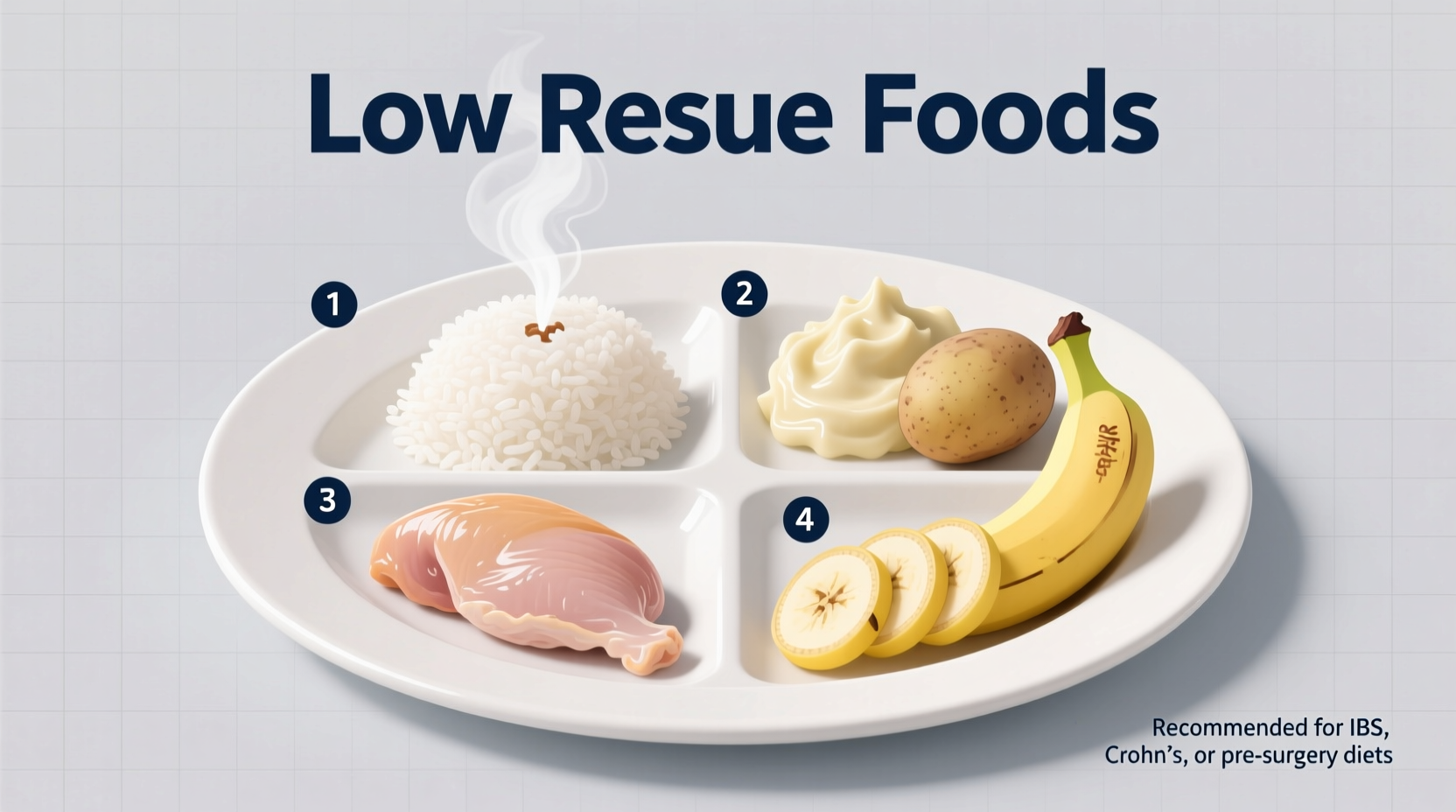Why Understanding Low Residue Foods Matters for Your Digestive Health
If you're dealing with digestive issues or preparing for a medical procedure, knowing what are low residue foods can significantly impact your comfort and recovery. Unlike regular diets, low residue eating focuses on minimizing fiber and other components that create "residue" in your intestines. This specialized approach gives your digestive system a much-needed rest while still providing essential nutrition.
Your Practical Low Residue Food Guide
When following a low residue diet, you'll focus on specific food categories that are gentle on your digestive system. Let's break down exactly what to include in your meal planning:
Approved Low Residue Food Categories
| Food Category | Safe Options | Fiber Content (per serving) |
|---|---|---|
| Grains | White bread, refined cereals (Corn Flakes), white rice, pasta, crackers | <1g |
| Fruits | Canned fruits, applesauce, ripe bananas, melons (without seeds) | <1g |
| Vegetables | Cooked carrots, green beans, beets, peeled potatoes, zucchini | <1.5g |
| Proteins | Eggs, tender meats, fish, poultry, tofu | 0g |
| Dairy | Cheese, yogurt (without fruit/seeds), cottage cheese, milk | 0g |
What to Avoid: High Residue Foods That Trigger Digestive Distress
Understanding what foods are low residue requires knowing what to eliminate. High residue foods create significant digestive strain that can worsen symptoms. The National Institute of Diabetes and Digestive and Kidney Diseases (NIDDK) specifically warns against these items during low residue diet periods:
- Whole grains (brown rice, whole wheat bread, oats)
- Raw fruits with skins (apples, pears)
- Raw vegetables (broccoli, cauliflower, corn)
- Nuts, seeds, and popcorn
- Legumes (beans, lentils)
- High-fiber cereals
Medical Context: When and Why Low Residue Diets Are Recommended
According to Mayo Clinic guidelines, low residue diets serve specific medical purposes with clear time boundaries. This isn't a long-term solution but rather a therapeutic approach for particular situations:
Context Boundaries for Low Residue Diets
- Pre-colonoscopy preparation: Typically followed for 1-3 days before the procedure
- Acute flare-ups of IBD: Used temporarily during Crohn's or ulcerative colitis flares
- Post-surgery recovery: Often recommended after bowel surgery for 4-6 weeks
- Diverticulitis management: During acute episodes, not for long-term prevention
Johns Hopkins Medicine emphasizes that extended use beyond medical recommendation can lead to nutrient deficiencies, as this diet restricts important vitamins and minerals found in high-fiber foods.

Implementing Your Low Residue Diet: Practical Steps
Transitioning to a low residue diet requires careful planning. Here's how to make the shift smoothly:
Step 1: Gradual Transition
Don't make sudden changes. Cleveland Clinic recommends reducing fiber intake gradually over 2-3 days to prevent digestive discomfort during the transition.
Step 2: Reading Labels Like a Pro
Check nutrition labels for fiber content. Look for products with less than 1 gram of fiber per serving. Be aware that "refined" doesn't always mean low residue—some refined products still contain significant fiber.
Step 3: Smart Substitutions
- Swap brown rice for white rice
- Choose canned fruits instead of raw
- Use egg noodles instead of whole wheat pasta
- Peel fruits and vegetables before eating
Important Considerations Before Starting
While learning what are low residue foods, remember these crucial points from medical professionals:
Medical Supervision Requirements
The American College of Gastroenterology strongly advises that low residue diets should be implemented under medical supervision. These diets are therapeutic tools, not lifestyle choices. Your healthcare provider can determine if this diet is appropriate for your specific condition and help you avoid potential nutritional deficiencies.
According to research published in the Journal of Crohn's and Colitis, improper implementation of low residue diets can sometimes worsen long-term digestive health by reducing beneficial gut bacteria diversity.
When to Return to a Regular Diet
Your healthcare team will guide your transition back to a regular diet. Typically, this happens:
- 24-48 hours after medical procedures
- As symptoms improve during IBD flare-ups
- Following your doctor's specific timeline after surgery
Low Residue Diet Evolution Timeline
The modern low residue diet approach has evolved significantly since its development in the 1940s. Originally created for ulcer patients, medical understanding has refined its application. The National Institutes of Health now emphasizes that low residue diets should be precisely timed interventions rather than long-term solutions, with careful attention to reintroducing fiber gradually to avoid complications.
Common Questions About Low Residue Foods
How long should I follow a low residue diet?
Most low residue diets are temporary, typically lasting 5-7 days for procedure preparation or during acute digestive flare-ups. Your healthcare provider will determine the appropriate duration based on your specific medical condition and needs. Extended use beyond medical recommendation can lead to nutrient deficiencies.
Can I get enough nutrients on a low residue diet?
While low residue diets restrict certain nutrients found in high-fiber foods, you can still obtain essential vitamins and minerals through careful food selection. Focus on nutrient-dense options like eggs, lean proteins, and refined grains fortified with B vitamins. Your doctor may recommend supplements to address potential deficiencies during extended use.
Is a low residue diet the same as a low fiber diet?
While similar, these diets have key differences. A low fiber diet specifically limits dietary fiber, while a low residue diet restricts additional components that create digestive residue, including certain sugars, fats, and connective tissues in meats. Low residue diets are typically more restrictive and medically supervised.
Can I eat out while following a low residue diet?
Yes, with careful choices. Opt for grilled meats without skin, white rice instead of brown, cooked vegetables without seeds or skins, and avoid sauces with seeds or nuts. Many restaurants can accommodate special requests if you explain your dietary needs. Always check ingredients when possible, as some seemingly safe options may contain hidden high-residue ingredients.
What happens if I accidentally eat a high residue food?
A single slip-up typically won't cause permanent damage but may trigger symptoms like abdominal pain, cramping, or increased bowel movements. Monitor your symptoms and return to your prescribed diet immediately. If you experience severe discomfort or complications, contact your healthcare provider for guidance.











 浙公网安备
33010002000092号
浙公网安备
33010002000092号 浙B2-20120091-4
浙B2-20120091-4